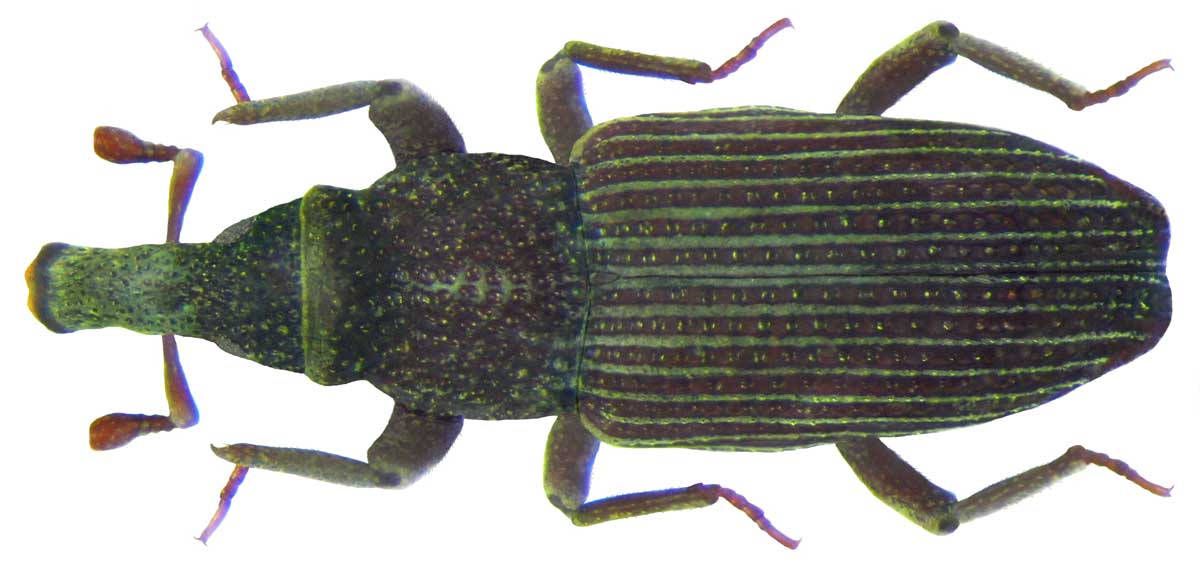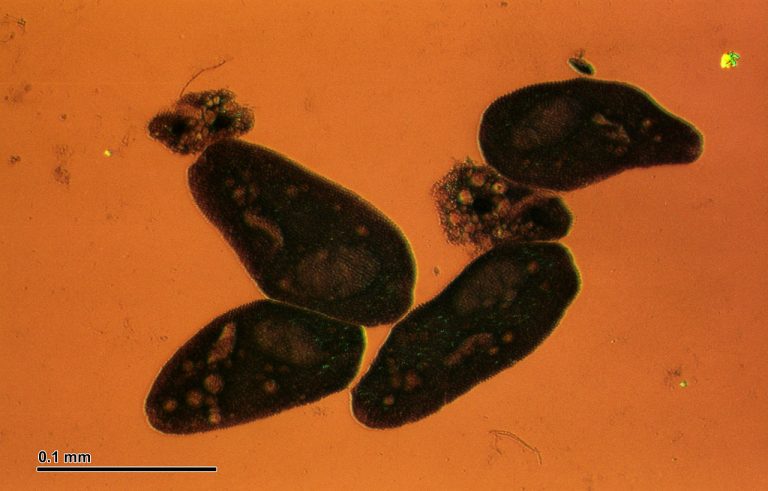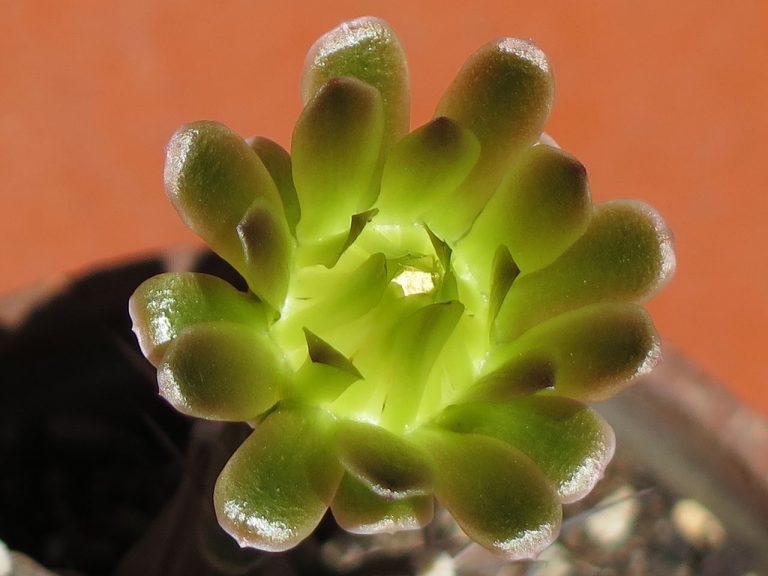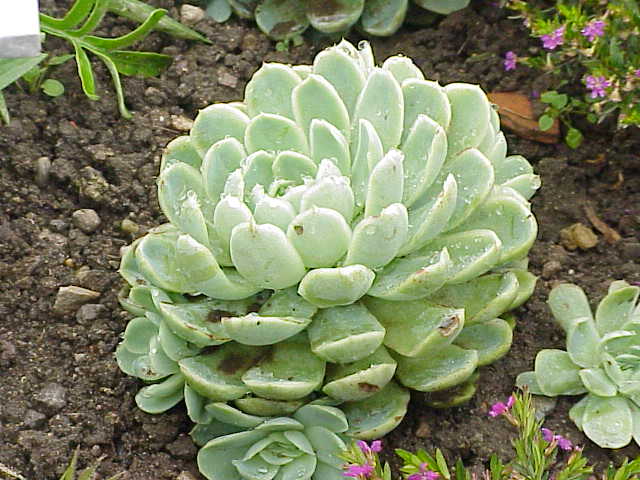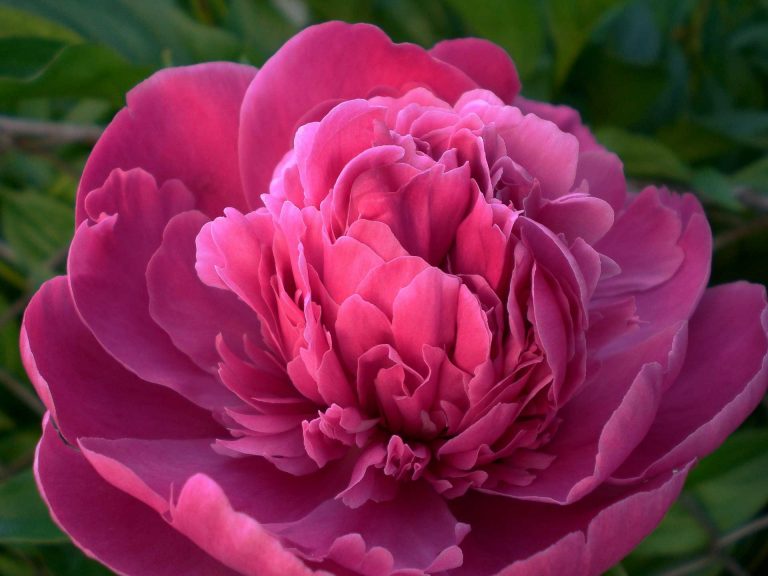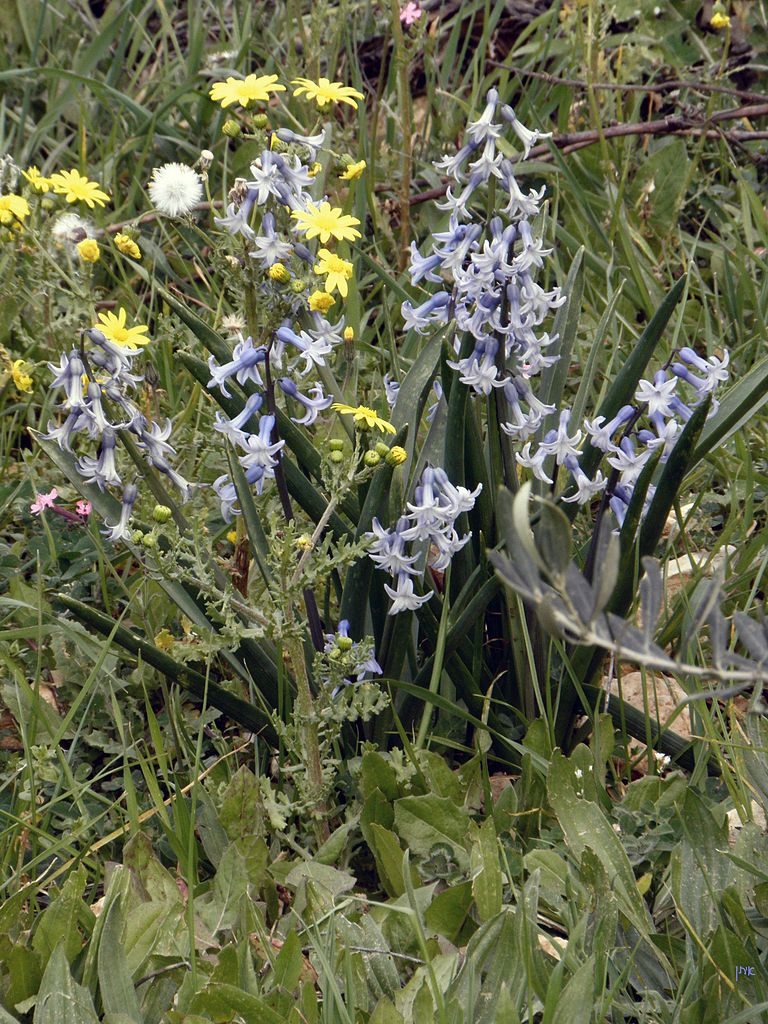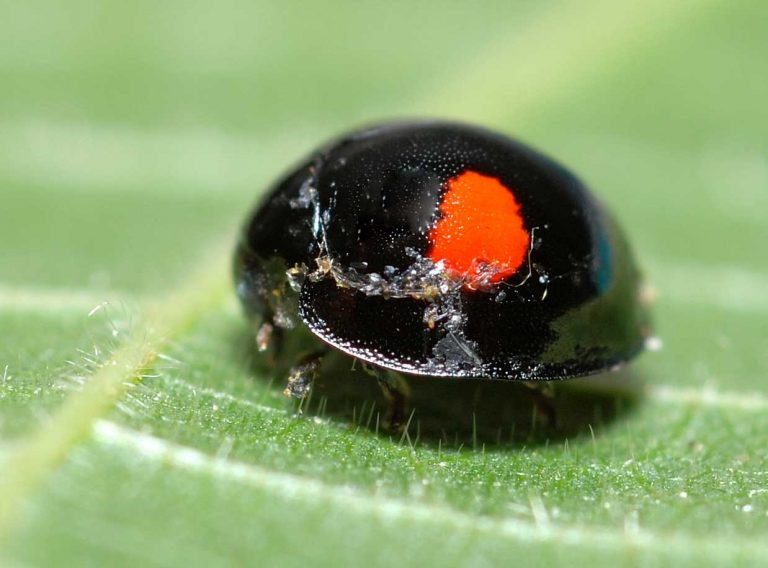Grain Weevil
Scientific Classification
| Kingdom: | Animalia |
| Phylum: | Arthropoda |
| Class: | Insecta |
| Order: | Coleoptera |
| Family: | Curculionidae |
| Subfamily: | Dryophthorinae |
| Tribe: | Litosomini |
| Genus: | Sitophilus |
| Species: | S. granarius |
Grain Weevil is a variety of beetles that belongs to the Curculionidae higher-level family. Generally, they are herbivorous, small, and below 6mm (0.24 in) in size. In most of the families there are more than 60,000 varieties, more particularly in the Curculionidae (the real weevils) family; a few of the remaining bottles, even though they are distant relatives, are called “weevil”- they are the Biscuit Weevil, scientifically named Stegobiumpaniceum, of the Anobiidae family. The wheat weevil, named Sitophilus Granaries, otherwise called grain weevil or even granary weevil, is found the world over. Besides, they are a general pest in several locations, they may be a source for destroying the harvested grains, that are stocked and lead to heavy reduction in the yields. The female lays a large number of eggs and the larvae feeds on the inner portion of the grain kernels.
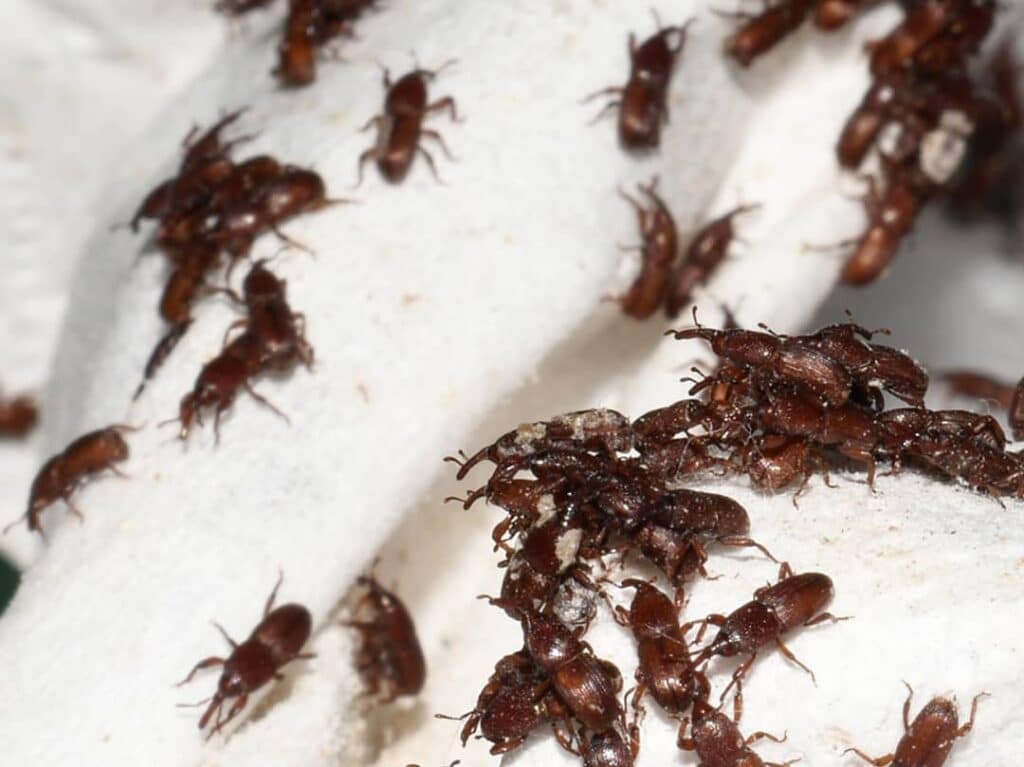
Description
Eggs, Larvae and Pupae
The stages of development of the S. Granaries occur inside the tunnel and in the chambers drilled in the grain; as such it is not visible. The larva is apodous (Science Dictionary – larva of an insect that has no appendages i.e. no legs or other type of limbs and compressed head) and white in color. The larva instars 4 times. The pupa and larva in common, look like the S, Oryzae and the S. Zeamais
Adult
There is a variation in length of the mature Sitophilus to a considerable extent from 2.5 to 5.0 mm, even though the normal length is from 3 to 4 mm. They possess the traditional elbow and rostrum antennae as that of the Curculionidae group. Their color is an evenly polished brown with a red hue or chestnut-brown shining black in color. Its body is unevenly covered with short, thick hairs, yellow in color. The head of the grain weevil extends into a slim snout. The back of the rostrum is strong and very closely deflated in males than in females. There are 8 segments in the antennae, housed in a lengthened way when it is walking. There are very clear oval punctures on the prothroax. The mature ones are wingless.
Host Range
The food of the granary weevil comprises of the following: barley, maize, groundnut, wheat, chickpea, oats, sunflower, millets, rice, sorghum, rye, broad bean, triticale (Wiki- hybrid of wheat) and the types of dry stored items.
Life Cycle
On an average, the granary weevils survive for a period of 7 to 8 months. Normally, the females lay from 150 to 300 eggs all through their lives. The females drill into the grain kernels and lay their eggs in them, further they seal the cavities with wax plugs, which is secreted by the female. Prior to hatching, the eggs are incubated for almost 4 to 14 days, based on the humidity and temperature. In every infested kernel, a single larva is created. The feeding larva digs out a tunnel and perhaps keeps on feeding till when only the hull is left. There exist 4 larva Instars; they all happen in the grain and pupation also takes place within the grain. The fresher adult that emerges, munches its way out of the grain, creating a typical rough and big rectangular hole at the exit with uneven edges. After discarding the kernel, the female discharges a sex pheromone to entice the male for the purpose of mating. When the surrounding is warm, it is possible for the life cycle to take 4 to 6 weeks, however in winter it takes 21 weeks. When the atmosphere is cool, an adult survives for a month with starvation. This variety cannot fly; however, it walks quite a distance and goes away into the fields with the sole intention of infesting the grain.
Behavior
When the grown up wheat weevils are bullied or aggravated, they draw their legs near to their body and pretend to die. The female weevil is clever enough to understand if the grain kernel possessed an egg that was laid within it by some other weevil, in which case they will leave that grain alone. The female digs a hole, places an egg and seals the hole using the gelatinous secretion. It is by this that a second female understands whether there is already an egg in it or not. This confirms that the young will live and make a new generation. As per research, it is estimated that a single pair of weevil is likely to bring about as much as 6,000 offspring a year.
Human Impact
Wheat weevils are pests of different varieties of grains and are likely to lay their eggs in oats, wheat, barley, rye, corn and rice. The extent of destruction caused by wheat weevils all over the world is not known, since keeping records of such large information is not easy, particularly in areas where there is no measurement of the harvest of the grains. Primarily because it is not easy to detect whether all the grains are infested, you would do well to wipe out the stocks. There are several methods of evading such wheat weevil. Pesticides are available with diverse techniques for preventing the nasty odor of rotting grain using unpleasant scents, You can also consider introducing organisms which prey on weevils.
Pest Management
Detection methods
The granary weevil larva matures within the grain, therefore it is complicated to sense the pest by normal visualizing, until they manifest in large numbers. The pests bore holes into the lot of fresh grains. When the infestation is severe, only the hull of the grain remains, along with powdered white frass (minute powdery leftover or delicate wood with perforations generated by the boring action of the insects). The big ragged edges of the rectangular hole are typical. Grains floating the on water are frequently are a sign of damage caused by lar
Cultural Practice
The efficient storage of goods with proper hygiene, like discarding and burning infested remains, tidying the store between intervals of harvest, storing only the selected goods that are not infested and by fumigating the goods to discard the remaining infestation. These methods reduce the chances of acute infestation of a granary weevil. Harvesting the crop at the earliest when it attains maturity, decreases the chances of harm caused by granary weevil and many other pests in store. Resistant cultivars are used for decreasing the harshness of infestation.
Physical Control
Sieving is a method of removal of adults from the grain, but it is a tedious process. The other method of decreasing the number of insects is by the addition of inert dust, like clay and ash to the grain; this causes the insect to die of desiccation.
Biological Pest Control
Biological management with parasitoids, parasites and predators is not at all practiced in against the granary weevil. Beauveria Bassiana is a biological insecticide device to manage granary weevil that remains in hoarded maize. It is possible to use Bacillus Thuringiensis on adults.
Controlled Atmosphere
Pests that remain in hoarded products are controlled in an atmosphere enriched with low oxygen, and carbon-dioxide
Freezing and Heating
If facilities are available, freezing the accumulated pest products for many days and heating them for 24 hours has proved successful in managing them.
Chemical Control
The granary weevil is prone to Organophodphorus Compounds like Irimiphos-Methyl and Fenitrothion; however, they are not so prone to Synthetic Pyrethroids. It is possible to fumigate the grain stock with Methyl Bromide or Phosphine. As pesticides are toxic, it is advisable to adhere to the safety precautions.

Having discovered a fondness for insects while pursuing her degree in Biology, Randi Jones was quite bugged to know that people usually dismissed these little creatures as “creepy-crawlies”.

